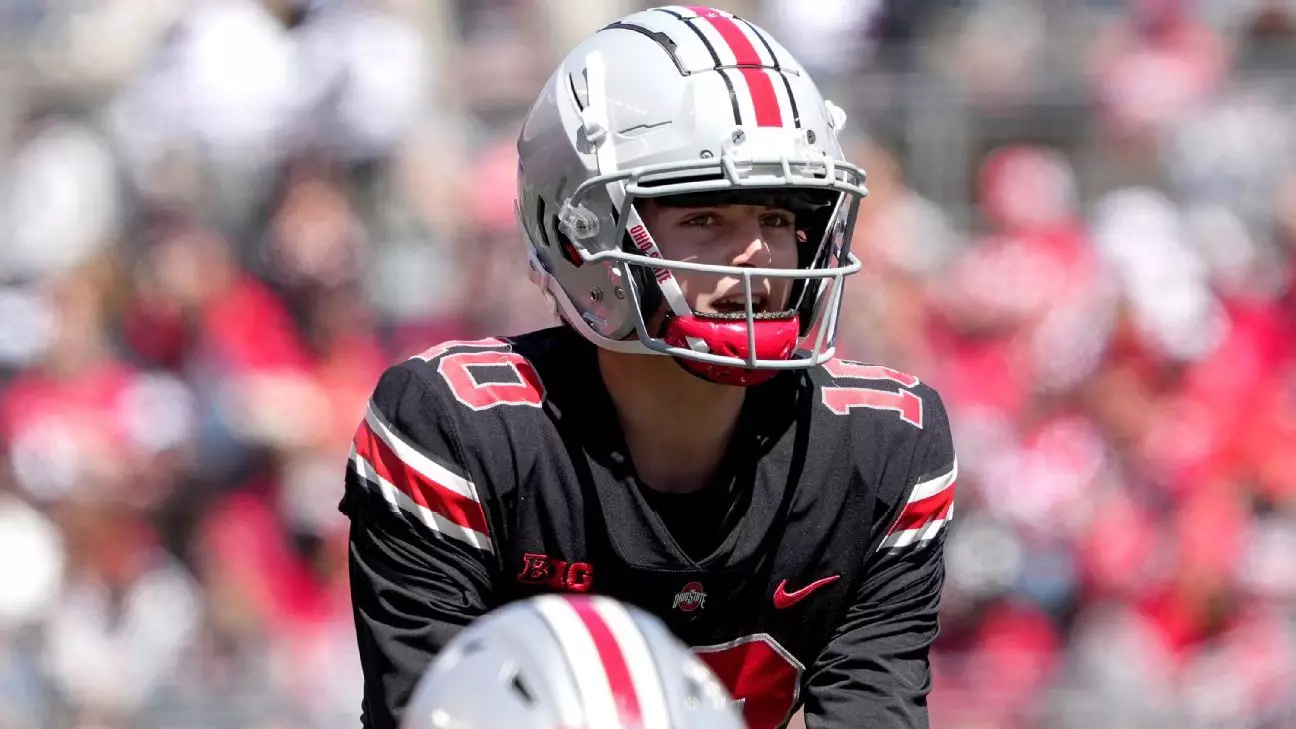The announcement of Julian Sayin as Ohio State’s starting quarterback for the highly anticipated season opener against No. 1 Texas isn’t just about talent—it’s an intricate web of narratives and perceptions that often obscure the reality of athletic decision-making. While Coach Ryan Day emphasizes “consistent play” and “growth,” these superficial metrics mask underlying issues such as the flawed evaluation process and the overemphasis on recent performance. This decision exemplifies how college football tends to favor a manufactured story of progression over a transparent, equitable assessment of talent, stability, and leadership qualities. The reality is that such decisions often hinge on subjective judgments, which are susceptible to bias and influenced by non-football factors like media narratives or player charisma.
Overhyped Recruitment and the Myth of Potential
Julian Sayin’s reputation as the No. 9 recruit and the top prospect from California in 2024 triggers a dangerous perception: that high-ranking recruits automatically translate into reliable starters. This belief—perpetuated by media coverage and fan expectations—fosters a false equivalency between potential and proven ability. The fact that Sayin transferred from Alabama after coaches’ retirements and adjustment periods exemplifies how recruiting hype often disregards the significance of mental resilience, team chemistry, and readiness. His limited experience—just four games, 27 snaps, and a modest passing yardage—was sufficient for Ohio State’s coaching staff to elevate him above a more seasoned competitor, Lincoln Kienholz. This decision raises questions about whether Ohio State’s leadership truly values practical performance or merely succumbs to the allure of a “future star in the making.”
The Dangerous Emphasis on Consistency and ‘Growth’
Coach Day’s emphasis on “consistency,” “growth,” and “taking care of the football” reveals a major flaw in how we judge quarterback readiness: a narrow, myopic focus that undervalues core leadership qualities such as calmness under pressure, decision-making intelligence, and pocket presence. While these attributes are critical, the tendency to rely heavily on recent practice statistics as a proxy for game-readiness distorts the true complexity of quarterback development. Ohio State’s decision seems less based on frank evaluation and more on the illusion that recent performances adequately reflect long-term potential. If consistency and growth are the ultimate metrics, then they must be more deeply scrutinized instead of being used as convenient justifications favoring the younger, more “projectable” player.
The Risks of Favoring Youth Over Experience
Despite traditional wisdom that values proven experience, Ohio State’s coaching staff has prioritized Sayin’s recent surge, sidelining Kienholz, who has demonstrated resilience and competence in past performances. The decision to designate Kienholz as a backup, despite limited recent playing time, signals a troubling trend: that in today’s college football ecosystem, hype and perceived upside are often deemed more valuable than performance history. This approach risks alienating players who have proved themselves in critical moments and fosters a culture where hype outweighs substance. The undercurrent of favoring raw potential over tested talent not only jeopardizes team cohesion but also undercuts the importance of stability in a high-stakes environment.
The Myth of the ‘Ready’ Young Player
Ohio State’s narrative suggests that Julian Sayin is “more ready” and “more consistent,” a judgment that unfortunately feeds into a myth prevalent in college athletics: that young athletes can rapidly evolve into reliable starters through gradual development. While this may be true to some extent, such claims often ignore the emotional maturity, leadership qualities, and mental toughness crucial for big-game scenarios. The reality is that young quarterbacks like Sayin are inherently riskier choices—especially when thrust into a spotlight as bright as the Texas matchup—without a true track record of leadership or clutch performance. This decision overlooks the importance of seasoned quarterbacks who can handle adversity calmly and inspire confidence, thereby maintaining team stability.
Ohio State’s quarterback pick highlights a broader trend in college football—one where hype, recruiting rankings, and recent practice hype tend to overshadow genuine readiness and proven stability. The decision for the season opener reflects a culture that prizes perceived upside over tested ability, a dangerous gamble when facing elite competition like Texas. While coaches may claim to prioritize “growth” and “consistency,” the underlying reality exposes a system overly reliant on spectacle, short-term narratives, and superficial evaluations. True leadership and strategic excellence demand more than just recent glimpses of potential; they require a nuanced understanding of a player’s capacity to lead under pressure, make sound decisions, and command respect. As college football continues to glamorize the young prospect, it’s worth questioning whether these choices serve the best interests of players, teams, or the sport itself.


Leave a Reply